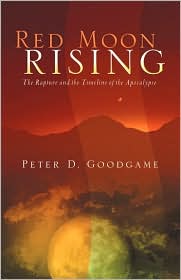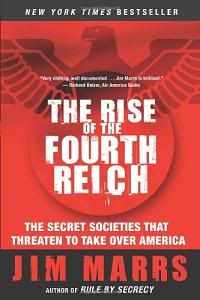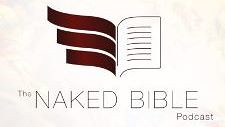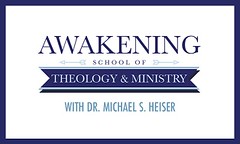
The Companion Bible Appendix # 141 - The Twelve Apostles
More books by E.W. Bullinger
Wednesday, September 28, 2011
The Companion Bible Appendix # 141 - The Twelve Apostles
Posted by
Steve McHenry
at
9:25 PM
0
comments
![]()
Labels: Appendix, Companion Bible, E.W. Bullinger
Tuesday, September 27, 2011
CrossFit Radio Episode 190 - Zach Even - Esh
 On Episode 190 of CrossFit Radio, host Justin Judkins interviewed Zach Even-Esh, who owns Underground Strength Gym, and his latest venture, Underground Strength Nation.This episode was webcast live at 6 p.m. PDT on Wednesday, Sept. 21, 2011.
On Episode 190 of CrossFit Radio, host Justin Judkins interviewed Zach Even-Esh, who owns Underground Strength Gym, and his latest venture, Underground Strength Nation.This episode was webcast live at 6 p.m. PDT on Wednesday, Sept. 21, 2011.Zach Even-Esh is a successful businessman, coach, and trainer of high-school and college athletes. His Underground Strength Gym is located in New Jersey, but athletes come from all over to train with him. Even-Esh came on the show to discuss topics ranging from training ideas and techniques to ways affiliate owners can improve their businesses. He explained how moving and lifting odd objects can add to any strength-training program, and he talked about training athletes both in and out of their competitive seasons. The man from “Dirty Jersey” stressed the importance of full range of motion when CrossFitting and how coaches need to excel at teaching proper technique. Finally, Even-Esh gave a list of resources CrossFitters can use to increase their knowledge of strength and conditioning.
Download as MP3
54 min. 7 sec.
CrossFit Radio Episode 190 - Zach Even - Esh
Posted by
Steve McHenry
at
3:30 PM
0
comments
![]()
Labels: Bodyweight Training, Fitness
Monday, September 26, 2011
I Have Achieved A "Mile"stone!
I Have Achieved A "Mile"stone!
Posted by
Steve McHenry
at
8:51 PM
0
comments
![]()
Labels: Bodyweight Training, Fitness
The Companion Bible Appendix # 140 - "The Gospel of the Kingdom" and Other "Gospels"

The Companion Bible Appendix # 140 - "The Gospel of the Kingdom" and Other "Gospels"
More books by E.W. Bullinger
The Companion Bible Appendix # 140 - "The Gospel of the Kingdom" and Other "Gospels"
Posted by
Steve McHenry
at
6:36 AM
1 comments
![]()
Labels: Appendix, Companion Bible, E.W. Bullinger
Friday, September 23, 2011
The Rise Of The Fourth Reich: The Secret Societies That Threaten To Take Over America by Jim Marrs
Jim Marrs has gathered compelling evidence of the effort that has been under way for the past sixty years to bring a form of National Socialism to modern America, creating in essence a new empire-or "Fourth Reich"!
Award-winning journalist Jim Marrs is the New York Times bestselling author of The Rise of the Fourth Reich, Rule by Secrecy, Alien Agenda, and Crossfire, which served as a basis for the Oliver Stone film JFK. He lives in Texas.
Jim Marrs on Amazon and Barnes and Noble
The Rise Of The Fourth Reich: The Secret Societies That Threaten To Take Over America by Jim Marrs
Posted by
Steve McHenry
at
6:35 AM
0
comments
![]()
Labels: Book, Conspiracy, Freemasonry, Globalization, Illuminati, New World Order, OTO, Politics
Thursday, September 22, 2011
PEOPLES IS PEOPLES... AND APES IS APES
from the September 20, 2011 eNews issue
http://www.khouse.org (visit our website for a FREE subscription)
In 2008, a piece of bone and a tooth of what is believed to be a young girl were found in Denisova Cave in southern Siberia, along with stone blades and body ornaments. Twenty years ago the small bone and a tooth would not have been much to go on. These days, however, 40 mg of real bone from a fossil can tell researchers a great deal of information - if the bone contains enough genetic material for researchers to sequence the DNA.
Researchers were able to compare DNA all around, and it turns out that the Denisovan girl and Neanderthals are related, but not directly. According to comparisons of genetic code, the Denisovan shared a common ancestor with Neanderthals and modern humans.
"It amazed me that we found this other extinct group of humans," evolutionary geneticist Svante Pääbo at the Max Planck Institute for Evolutionary Anthropology at Leipzig, Germany, told LiveScience. "When we got this little finger bone from Siberia, I was totally expecting it to be either Neanderthal or modern human. When it was something else, that was totally surprising and shocking to me."
Ancient humans might bear some superficial physical differences from modern homo sapiens, but they were all still humans and able to breed with one another. In fact, interbreeding between modern-form humans and Neanderthals may have given us modern humans certain genes that helped boost our immune systems.
At the least, Neanderthals share key immunity genes with us, namely the HLA (human leucocyte antigen) class 1 gene. HLA proteins are important in helping the body defend itself against new infections. A variant called HLA-B*73 is found both in modern humans and Denisovans.
There's quite a bit of Neanderthal DNA floating around out there in the population. According to researchers, up to four percent of Neanderthal DNA and up to six percent of Denisovan DNA have survived in modern humans. It's been known for some time now that Neanderthals bred with the people whose descendants are now found in Europe and western Asia. Denisovan genes can also be found in the population of Europe and especially in the people of Asia and the oceanic islands.
No Missing Links
For more than a century, Neanderthals were portrayed as brutish, evolutionary missing links. They brought to mind the knuckle-dragging cave man, little better than apes themselves. Those pictures of Neanderthal are sadly incorrect. Evidence consistently points to Neanderthals as an extinct, but completely human, group of individuals. Neanderthals used tools, buried their dead, and even made musical instruments. The Denisovan bones were found with tools and body ornaments, which are both characteristic of human beings.
In the Bible, Adam's son Seth was born as a replacement for Abel, who was murdered by Cain. However, Cain, Abel, and Seth were not the only children Adam and Eve produced. Genesis 5:4 states that Adam lived another 800 years after Seth was born, and he begat sons and daughters. Seth's importance in the story comes from the fact that it is through his descendants that Noah is born. The only human genetic lines that survived the Flood were those that climbed on board the ark – namely, the genes of Noah's three sons and their wives.
With the Flood, God wiped out nearly all of humanity. He preserved one slender group of genes to continue on through the children of Shem, Ham and Japheth. It should therefore be no shock that we find the remains of other extinct humans that don't look exactly like us. Their gene pools were nearly wiped out.
Apes Are Still Apes:
On the other hand, paleoanthropologists are constantly seeking out new fossils they hope will finally provide science with the missing links between apes and humans. The newest human precursor is Australopithecus sediba. A. sediba was discovered in South Africa in 2008 by a little boy and his dog, and later identified as an australopithecine, a cousin of the famous Australopithecus afarensis, Lucy.
While A. sediba provides an exciting new puzzle piece for evolutionary paleoanthropologists, its similarities to humans - just like Neanderthal's differences - are superficial. A. sediba has been lauded for having hands strong enough to grasp tree branches while at the same time have hands that could use tools. Its pelvis is also more curved than other australopithecines, which the researchers believe would have made it easier for females attempting to give birth to babies with larger heads and brains. The fact that A. sediba itself has a small head, with a brain capacity of only 420 cc, doesn't discourage the scientists. They consider A sediba to be a possible human ancestor, and therefore the researchers see a human head-friendly pelvis in A. sediba. Whether this is a case of, "If I hadn't believed it, I wouldn't have seen it," requires a second opinion.
"They are important fossils and remarkably detailed," said paleontologist Bernard Wood of George Washington University in D.C.. Wood stood among those paleontologists who were not yet willing to support A. sediba as a human ancestor. "I have some resemblances to Warren Buffett, but I'm not a billionaire," Wood says. "A few resemblances does not an ancestor make."
At the end of the day, A sediba is still an ape. She is an ape with long fingers and a wide pelvis. No tools or jewelry were found with A sediba. The apes did not bury their dead nor play handmade flutes. A. sediba simply represents the longing of paleoanthropologists to fill in the gaps between humans and apes on an evolutionary tree.
The difficulty is that the gaps are fairly large. Each new fossil discovery adds just one more individual to either the human family branches or the ape family branches. As much as paleoanthropologists want the two sets of branches to eventually run into each other, as time progresses, they look more and more like two, many-branched bushes and not one single tree at all.
Related Links:
- Neanderthal Sex Boosted Immunity In Modern Humans
- BBC News - Neanderthal Mating Gave Modern Day Humans a Boost
- Bio News - Human Ancestors Had Sex with Now-extinct Relatives
- International Business Times - Neanderthal Flute
- NYU.edu - Neanderthal 99.5 Percent Human
- Live Science - Neanderthal Man And The King Of Creation
- Koinonia House eNews - 2-Million-Year-Old Fossils Raise Human Ancestor Hopes
- USA Today - Fossil Trove Sheds Light On a Stage of Evolution
- The Wall Street Journal
PEOPLES IS PEOPLES... AND APES IS APES
Posted by
Steve McHenry
at
7:11 PM
0
comments
![]()
Labels: Chuck Missler, Creation, Darwinism, Evolution, Humanism, Koinonia House
Wednesday, September 21, 2011
The Companion Bible Appendix # 139 - "Dead" and "The Dead"

The Companion Bible Appendix # 139 - "Dead" and "The Dead"
More books by E.W. Bullinger
The Companion Bible Appendix # 139 - "Dead" and "The Dead"
Posted by
Steve McHenry
at
6:37 AM
0
comments
![]()
Labels: Appendix, Companion Bible, E.W. Bullinger
Tuesday, September 20, 2011
The Companion Bible Appendix # 138 - The Double Miracles of Matt. 9:18; Mark 5:22; and Luke 8:41

The Companion Bible Appendix # 138 - The Double Miracles of Matt. 9:18; Mark 5:22; and Luke 8:41
More books by E.W. Bullinger
The Companion Bible Appendix # 138 - The Double Miracles of Matt. 9:18; Mark 5:22; and Luke 8:41
Posted by
Steve McHenry
at
6:34 AM
0
comments
![]()
Labels: Appendix, Companion Bible, E.W. Bullinger
Saturday, September 17, 2011
The Companion Bible Appendix # 137 - The Synonymous Words for "Worship"

The Companion Bible Appendix # 137 - The Synonymous Words for "Worship"
More books by E.W. Bullinger
The Companion Bible Appendix # 137 - The Synonymous Words for "Worship"
Posted by
Steve McHenry
at
7:02 PM
0
comments
![]()
Labels: Appendix, Companion Bible, E.W. Bullinger
Thursday, September 15, 2011
The Companion Bible Appendix # 136 - The Synonymous Words for "Wash"

The Companion Bible Appendix # 136 - The Synonymous Words for "Wash"
More books by E.W. Bullinger
The Companion Bible Appendix # 136 - The Synonymous Words for "Wash"
Posted by
Steve McHenry
at
7:21 PM
0
comments
![]()
Labels: Appendix, Companion Bible, E.W. Bullinger
Wednesday, September 14, 2011
Red Moon Rising by Peter D. Goodgame

How does the Apocalypse actually begin? What will cause the Creator of the universe to intervene in the affairs of humanity, affecting mankind globally, decisively, and unmistakably?
For the secular world today, the possibility of divine intervention is either ignored or mocked, yet the book of Revelation predicts that a global cataclysm will occur. It will take the form of a catastrophic shaking of the entire earth, and when it happens, all of mankind will know that God was responsible.
Red Moon Rising offers a challenge both to prophecy skeptics outside the Church and to prophecy scholars within the Church with its systematic and sensible chronological model of prophetic events, from the birth pangs of the Apocalypse, to the brief triumph of the Antichrist, to the final destruction of the Beast’s kingdom and the Second Coming of Jesus Christ.
Groundbreaking new insights within Red Moon Rising include:
A provocative possibility for the true identity of the Two Witnesses of Revelation, based on often overlooked prophecies from Haggai and Zechariah.
The precise chronological placement of the Rapture of the Church within the book of Revelation and in relation to the 70th Week Tribulation period.
The very real possibility that the destruction of Damascus, Syria, will be the final event that sets the stage for the “great and dreadful Day of the Lord.”
Click here to order your copy
Red Moon Rising by Peter D. Goodgame
Posted by
Steve McHenry
at
6:50 AM
0
comments
![]()
Labels: Antichrist, Apocalypse, Armageddon, Beast, Bible, Book, Endtimes, False Prophet, Prophecy
Tuesday, September 13, 2011
The Companion Bible Appendix # 135 - The Synonymous Words for "Love"

The Companion Bible Appendix # 135 - The Synonymous Words for "Love"
More books by E.W. Bullinger
The Companion Bible Appendix # 135 - The Synonymous Words for "Love"
Posted by
Steve McHenry
at
6:33 AM
0
comments
![]()
Labels: Appendix, Companion Bible, E.W. Bullinger
Thursday, September 08, 2011
The Companion Bible Appendix # 134 - The Synonymous Words for "Pray" and "Prayer"

The Companion Bible Appendix # 134 - The Synonymous Words for "Pray" and "Prayer"
More books by E.W. Bullinger
The Companion Bible Appendix # 134 - The Synonymous Words for "Pray" and "Prayer"
Posted by
Steve McHenry
at
7:09 PM
0
comments
![]()
Labels: Appendix, Companion Bible, E.W. Bullinger
Wednesday, September 07, 2011
The Companion Bible Appendix # 133 - The Synonymous Words for "See", "Look", "Behold", &c.

The Companion Bible Appendix # 133 - The Synonymous Words for "See", "Look", "Behold", &c.
More books by E.W. Bullinger
The Companion Bible Appendix # 133 - The Synonymous Words for "See", "Look", "Behold", &c.
Posted by
Steve McHenry
at
7:45 PM
1 comments
![]()
Labels: Appendix, Companion Bible, E.W. Bullinger
Tuesday, September 06, 2011
First Night of Running
Well, I finally did it! After weeks of procrastinating, I actually went out for my first run tonight. It has literally been years, possibly a decade or more, since running has been a part of my fitness regimen. I have been wanting to add some form of cardio to go along with my "Convict Conditioning" Bodyweight Training program. After consulting with Zach Even - Esh, I decided to take his advice and start running.
Tonight was my first night out. It was a 3 mile trip, alternating between running and fast walking. At times, I thought my chest was going to explode! It's been a long time since I've felt that burn in my lungs, but I'm glad I finally did it, and I feel much better because of it.
I'd like to say thank you to my wife, Jennifer, for loving and caring enough about my health, to encourage me to get up, get outside, and get moving. Also a big thank you to Zach Even - Esh, for all your motivation and inspiration, Bro!
First Night of Running
Posted by
Steve McHenry
at
9:26 PM
0
comments
![]()
Labels: Bodyweight Training, Fitness
Thursday, September 01, 2011
The Companion Bible Appendix # 132 - The Synonymous Words for "Know", "Knowledge", &c.

The Companion Bible Appendix # 132 - The Synonymous Words for "Know", "Knowledge", &c.
More books by E.W. Bullinger
The Companion Bible Appendix # 132 - The Synonymous Words for "Know", "Knowledge", &c.
Posted by
Steve McHenry
at
6:25 AM
1 comments
![]()
Labels: Appendix, Companion Bible, E.W. Bullinger









